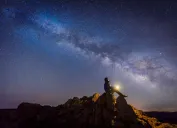NASA Says Solar Eruptions Are Increasing—Here's How That Could Affect Us
Our solar system's star is becoming more active, bringing potential implications for our planet.
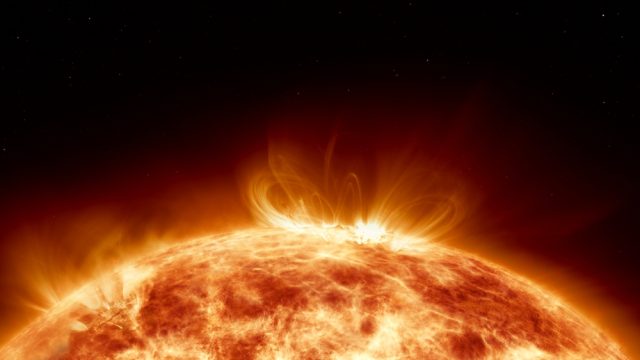
Although it literally makes the world go round, it's still hard to overstate how much the sun affects our daily life. It creates day and night by moving across the sky, causes heat waves in the summer, and can make the winter months feel positively chilly in its relative absence. But these regular occurrences aren't the only events caused by this immensely powerful celestial object. Now, NASA says we're seeing solar eruptions that have begun increasing in frequency. Read on to see how the sun's jump in activity could affect us here on Earth.
READ THIS NEXT: 8 Amazing Things You Can See in the Night Sky Without a Telescope.
The sun has recently entered a more active cycle, bringing more solar eruptions.
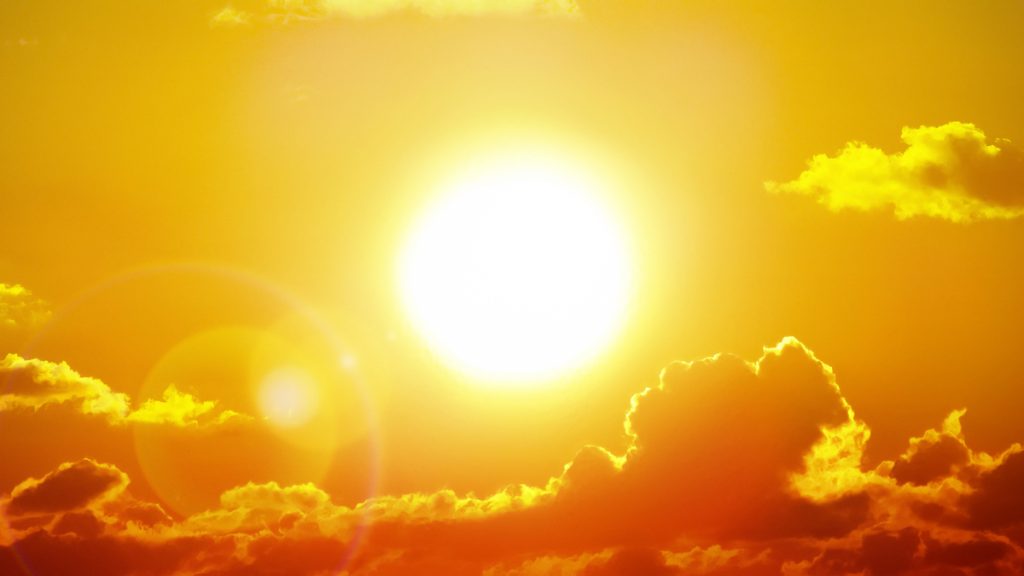
Unlike the constantly changing moon, it can be hard to notice the sun behaving differently as it passes overhead. But in recent months, our solar system's namesake has seen a considerable spike in activity as more frequent flares and other phenomena launch inconceivably large bursts of energy out into space, according to NASA.
The upswing in events began after the sun began Solar Cycle 25 in Dec. 2019 with what's known as a solar minimum. The star's natural 11-year cycles are based on highs and lows in the sun's activity as it goes from relatively calm to more "stormy," producing more sunspots before its magnetic poles eventually reverse, per NASA. This time, the space agency says the sun is "already exceeding predictions" with its activity, which is expected to increase until solar maximum is reached sometime in 2025.
Increased sun activity and eruptions can affect daily life on Earth.
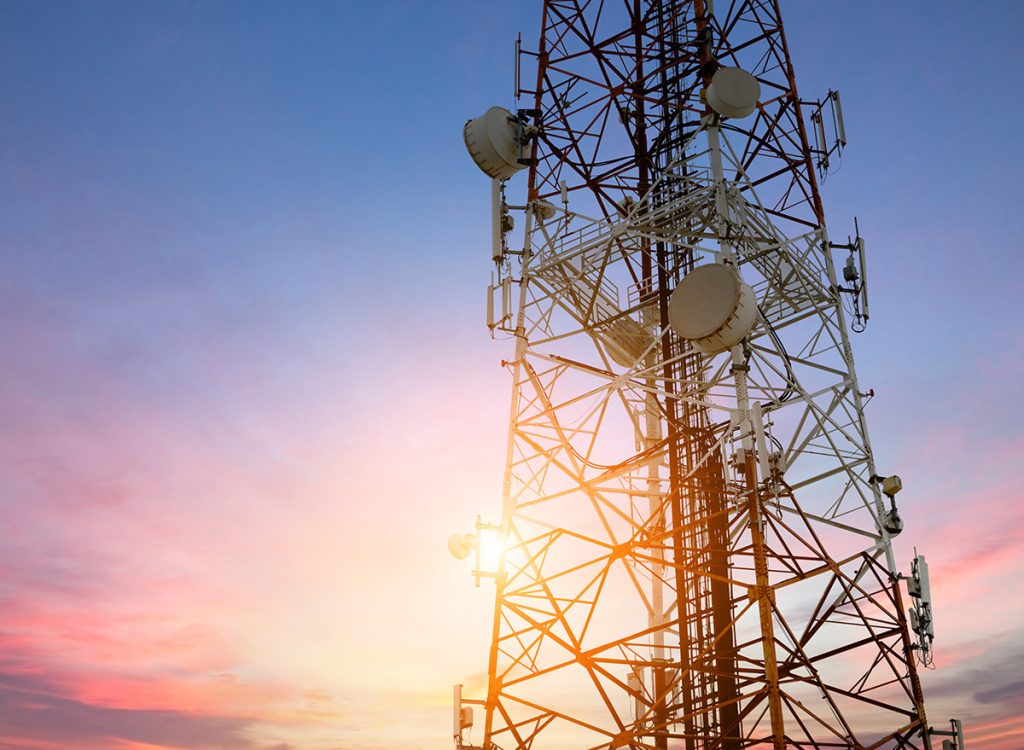
An active sun can put on a dazzling display as solar flares and coronal mass ejections (CME)—an explosion of plasma and magnetic field—shoot out from the star. However, some of these explosions can also send massive bursts of charged particles toward our planet if the timing is just right. Some of the most powerful flares create energy equivalent to a billion hydrogen bombs—or enough to power the entire world for about 20,000 years, NASA says.
Fortunately, our planet is no stranger to this type of phenomenon. Our atmosphere shields us from the intense radiation that would otherwise be highly harmful. However, you still might notice when a significant solar flare or CME happens to hit Earth—especially as they become stronger and more frequent.
"With more activity comes an increase in space weather events including solar flares and solar eruptions, which can impact radio communications, electric power grids, and navigation signals, as well as pose risks to spacecraft and astronauts," NASA writes. "We have an increasing dependence on space-based technology and ground-based infrastructure that are susceptible to the dynamic nature of space."
The agency warns that particularly strong solar flares and CMEs could disrupt the Earth's electrically charged upper atmosphere known as the ionosphere, causing issues for everyday items such as radios and GPS navigation. While many disruptions are shortlived, blackouts can carry on for hours in the worst cases, creating problems for emergency response teams who rely on radios to communicate during natural disasters.
RELATED: For more up-to-date information, sign up for our daily newsletter.
Intense solar events could also create problems for power grids and other equipment.
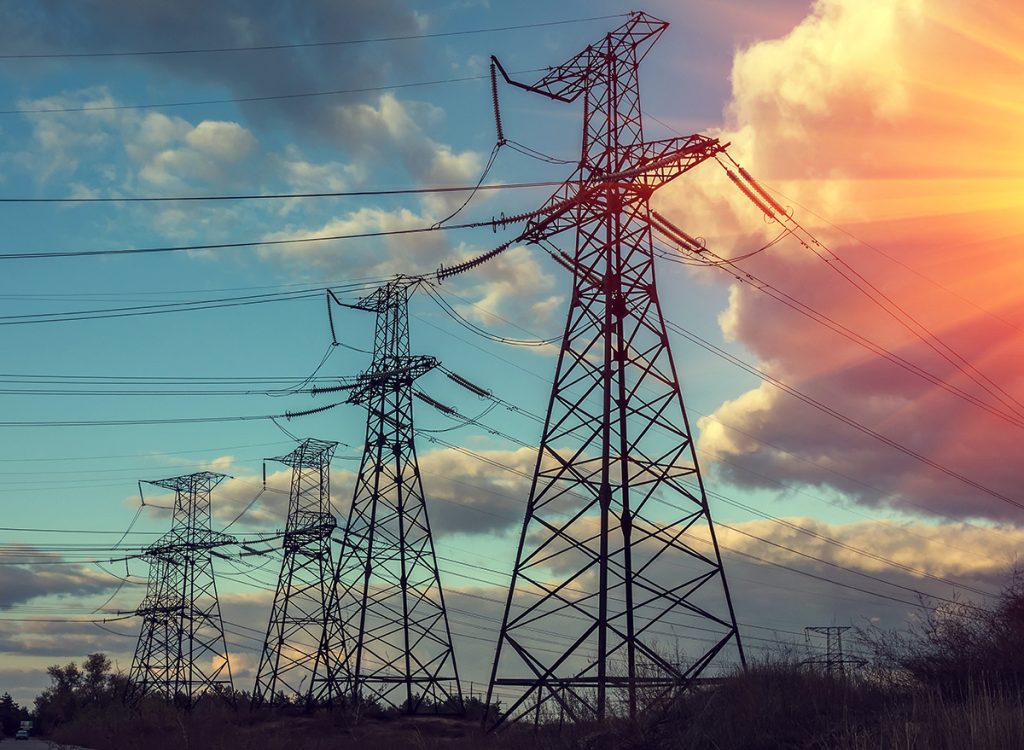
Ironically, a hyperactive sun could also send the planet into darkness. A sudden burst of highly charged particles can create electrical currents in the ionosphere, causing interference with electrical particles on the ground that could flood power grids, according to Insider. While the interference could be temporary, the overload could also damage transformers and cause them to explode.
An event of this magnitude would make any repairs to bring back power "a matter of weeks or even months," Mathew Owens, a professor of space physics at the University of Reading, told Insider. "Then you lose refrigeration, you lose power to hospitals—things get quite serious quite rapidly," he warned.
The Earth has experienced such interference in the past, including an intense solar storm in 1859 that took out telegraph lines worldwide, Insider reports. And more recently, interference from a solar storm knocked out power grids across Quebec, Canada, in 1989 that cut electricity for nine hours.
Communications disruptions could also have an impact on your travel plans. Owens also told Insider that "space weather can ground flights" when radio and satellite instruments become inoperable. And in a recent study, data showed that an increase in solar activity coincided with a 21 percent increased likelihood of flight delays of at least 30 minutes over the last 22 years.
Some experts say measures are in place to help protect against any major events.
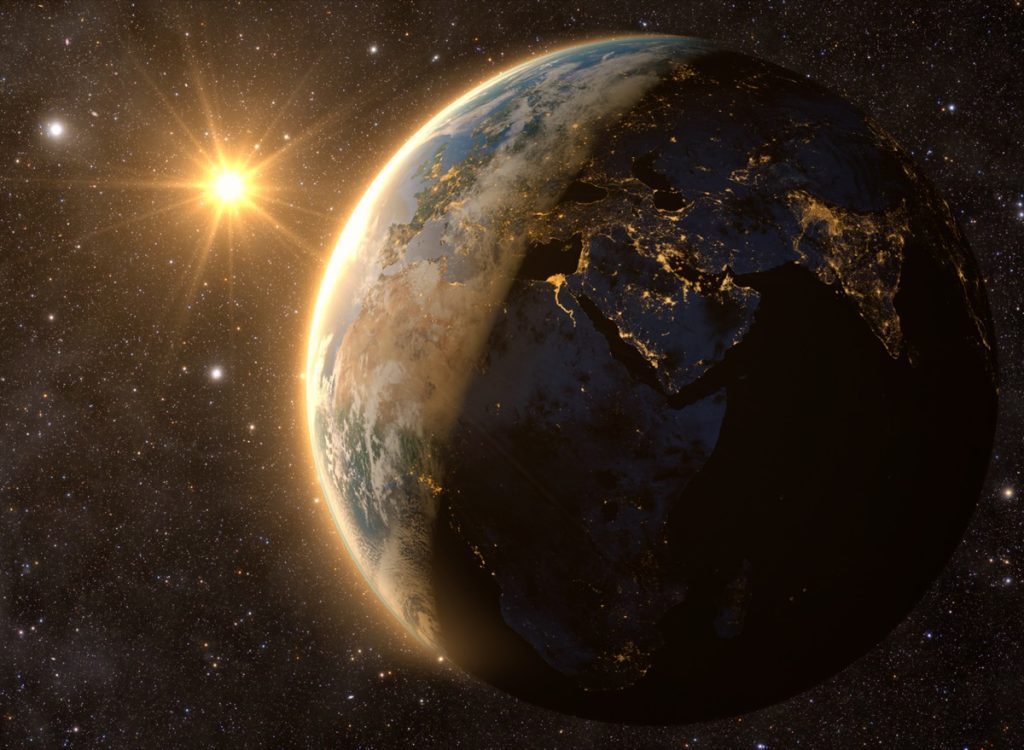
But while it may sound like imminent danger is headed our way thanks to the solar activity spike, some experts are still optimistic that the risk of any kind of major catastrophe remains quite low. Scientists from the U.S. National Oceanic and Atmospheric Administration (NOAA) Space Weather Forecast Office currently use observational data to give power companies the heads up that interference could be coming, Scientific American reported. This type of preparation allows them to decrease power output or bring backup equipment online to prevent problems.
The regularity of the sun's activity cycle also shows us that more flares and CMEs don't always coincide with chaos. "At this point, I do not need to convince you that we are not facing the apocalypse," Erika Palmerio, a heliophysicist at solar research company Predictive Science, told Scientific American during an interview last January. "At every solar cycle, it's as if we forgot what happened in the previous one. In [the cycle that stretched from 1996 to 2008], we saw really strong events. And I'm pretty sure that most people didn't even know those events happened."
"We have to monitor, and we have to be prepared. But we do not have to lose sleep over this," she added.
If anything, the worst catastrophes will likely come from much closer to home. "As a person who works with this every day, I am way more scared of a 'doomsday' derived from terrestrial weather like forest fires, hurricanes, and extreme weather," Palmerio points out.

